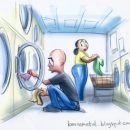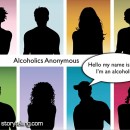
The Best Story Wins
Years ago, mealtimes in many homes meant story time – retellings of work experiences, report cards and bargains. When friends, uncles and aunts came to visit and mealtimes were longer, there was more storytelling, gossiping and laughing. (And yes, crying and arguing were part of those stories, too.)
Kids heard stories of compassion, greed, success and failure. The stories may have been intuitive or calculated. Still, they were ways of teaching and entertaining. They motivated and convinced us, and many any of those stories had a lifelong impact. It’s interesting to look back at those gatherings and see how stories changed our thinking and our behavior – for better or for worse.
In the book, Whoever Tells the Best Story Wins: How to Use Your Own Stories to Communicate With Power and Impact, author Annette Simmons does a great job of reverse engineering the type of stories that people can tell to connect and motivate others. She explains six story types and how they help people build the trust that’s essential for positive social interactions. Here’s a snapshot of her work and tips for educators, business people and healthcare providers.
Who-I-Am Stories: Tell personal stories that show you have the qualities that people need to build their trust.
Why-I-Am-Here Stories: Show you’re receiving honorable profits and that you’re there to do the right thing.
Teaching Stories: Share an experience to teach a lesson, rather than offering advice.
Vision Stories: Reframe issues as important stepping stones to a big, bright future.
Values-in-Action Stories: Create value or virtues by showing those in a story.
I-Know-What-You-Are-Thinking Stories: Tell someone what you think are their secret fears to build trust. Compassionately validate them, and then diplomatically dispel their objections.
Stories can also help to temper the fear of the unknown because, as Simmons states it in her book, “Incomplete information is almost always filled in with worst case scenario stories.” Similar fatalistic outcomes might happen when there’s too much information and people are overwhelmed.
However, providing an intentional narrative may increase a sense of safety. It can make life a bit more meaningful to people at a crossroad so they can choose the next right step.










Comments are closed.